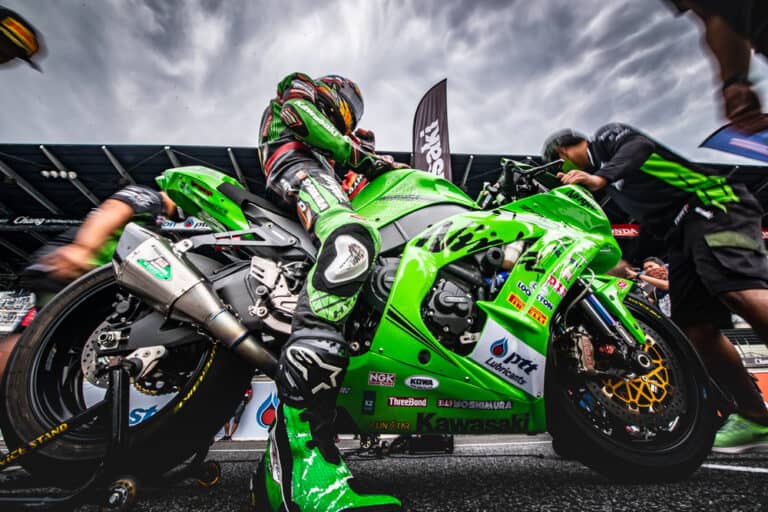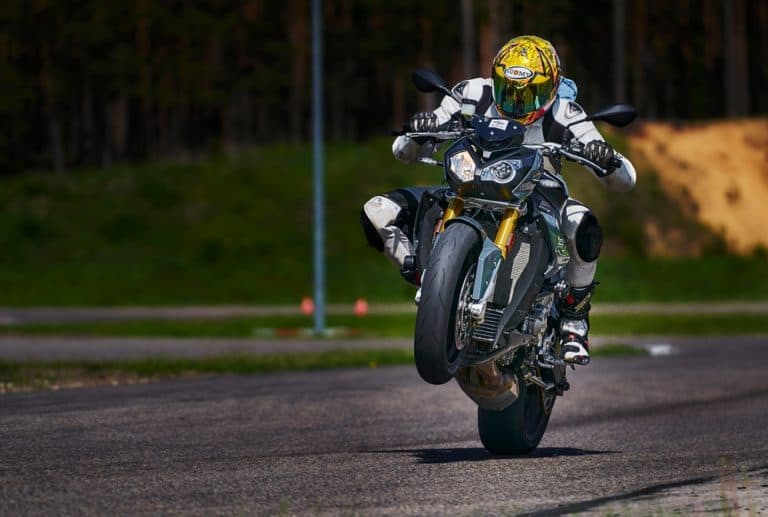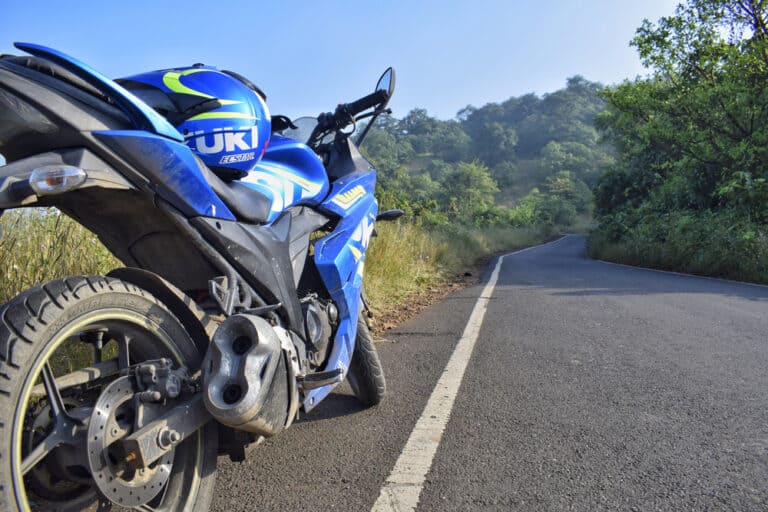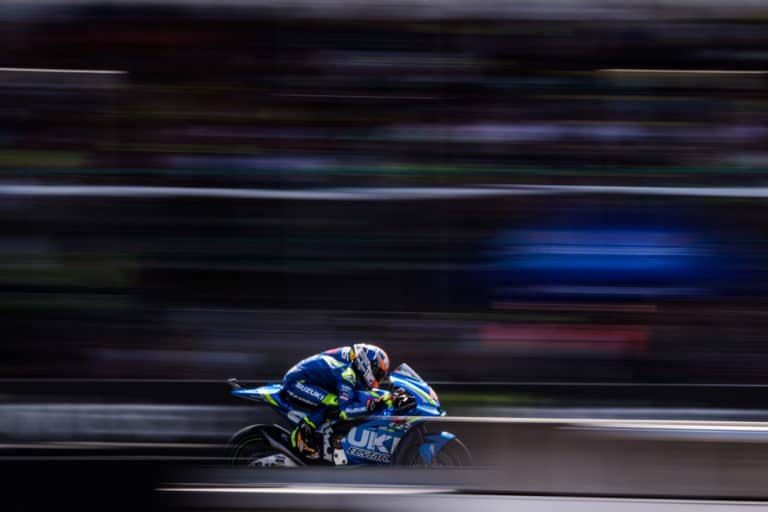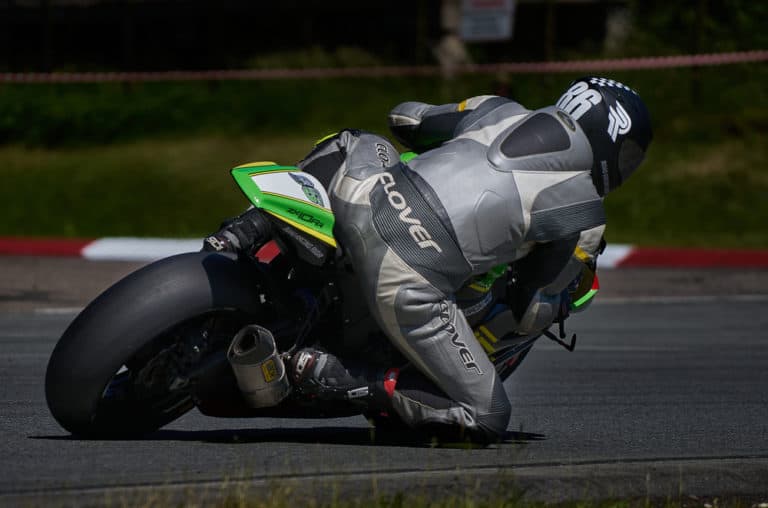Editorial credit: Natursports / Shutterstock.com
Bikes that are used by MotoGP riders can reach speeds of up to 225 mph, making crashes a common occurrence with a high risk of severe injury or even death. With riders frequently crashing at these speeds, it is hard to believe that some come out of a crash unscathed. Several factors help MotoGP riders survive crashes.
MotoGP riders can survive high-speed crashes by crashing the right way, being in peak physical form, and the protection created by their biking equipment. These components help MotoGP riders to survive with little-to-no damage to their bodies.
Three crucial factors influence the safety of MotoGP riders. These safety factors can influence how severely a MotoGP rider may be injured in a crash. Of these factors, all three must be present to ensure the safety of a MotoGP rider and decrease the risk of serious injury.
How Are MotoGP Riders Able To Survive Crashes?
When MotoGP riders are involved in crashes, the crashes are hardly fatal, and the riders usually end up walking away uninjured. Even though most MotoGP crashes aren’t fatal, to ensure that fatal crashes aren’t likely to happen and to try to prevent injury, there are significant factors that, if implemented, would decrease the severity of a MotoGP crash.
The first factor that helps MotoGP riders survive crashes is their mental and physical condition. These riders must ensure that they are in peak mental and physical condition before attempting to take part in a race, as this influences the way they ride and can cause a severe crash if not in the correct mental and physical state.
MotoGP riders are highly trained professionals and are trained to withstand injuries to a great extent. In training, MotoGP riders are trained to crash correctly, as crashing the correct way can be the difference between walking away uninjured or with a broken arm.
The final crucial aspect riders must stick by is the compulsory MotoGP safety equipment. This equipment includes helmets, protective armor, airbags, racing pads, gloves, boots, and a racing suit. These components protect the rider in the case of a possible crash or when going around a corner.
The Importance Of Conditioning To Reduce MotoGP Fatalities
MotoGP doesn’t solely focus on physical conditioning but also on mental conditioning. Some might think that conditioning for MotoGP racers is unnecessary, but MotoGP demands both physical and mental strength.
The physical training of MotoGP riders is split into pre-season fitness training, racing period fitness training, summer break fitness training, and off-season fitness training. These training periods focus on different aspects of the physical conditioning of the riders.
During these training periods, the riders will do strength and flexibility-focused training. The physical strength of a rider is crucial as it increases their stability while racing. Some need to focus on arm workouts to ensure sufficient leverage, while others focus on core and back workouts. Flexibility training is also vital, enabling riders to move faster on the bike when necessary.
Mental conditioning is also a very significant factor. Riders must be focused at all times while staying alert to their surroundings. They must also think quickly and act responsibly, as it is not only their lives at stake but also the lives of their fellow riders. Being mentally fit and in a suitable mind space will ensure safety for all on the track.
How Do MotoGP Riders Crash The Right Way?
Part of the training that MotoGP riders go through includes practicing what to do if they are to crash. As crashing the correct way can be the reason for the survival of these riders, emphasis is also put on crash training.
Riders are trained to use their speed and the asphalt to ensure they survive a crash. The speed that they are riding can be used to their advantage, allowing them to glide across the asphalt for several feet and then safely stand back up again. The longer they glide along the asphalt, the quicker they will come to a complete stop.
If a rider sticks to the training of what to do if they crash and uses their speed and the asphalt to their advantage, they are less likely to gain an injury or have a fatal crash. The only other reason a rider might walk away with an injury is if, while crashing, they hit a solid object like their own bike or a competitor.
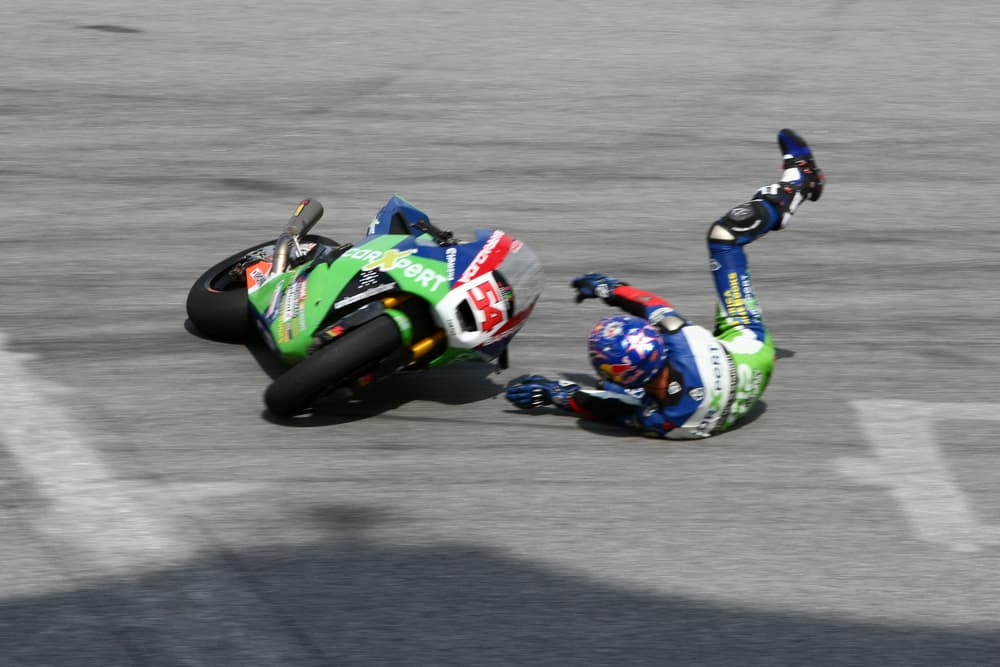
What Biking Equipment Does A MotoGP Rider Use?
Besides the bike riders use, the second most important thing that all MotoGP riders need to have to compete in a race is a specific set of biking equipment. This biking equipment protects the rider from the asphalt while cornering and in case of a crash. There are specific prescribed biking equipment MotoGP riders must use.
Racing suits are compulsory in MotoGP racing as they add an extra layer of protection for the rider. The suit is essential to the safety gear as it protects the rider against scraping and impact during crashes. The racing suit also comprises other safety features, such as armor and an airbag.
MotoGP suits have inner pockets that store protective armor. The protective armor used is plates that are slid into the inner pockets of the riders’ suits. These armor plates are created to absorb any impact that may be created from a crash and are also used to protect the riders’ most vulnerable areas.
Besides the armor plates placed in the riders’ suits, riders also need knee and elbow pads. These pads ensure the rider’s safety while going around a corner. Riders often lean at such angles that their knees and sometimes elbows touch the asphalt. These pads ensure that the rider won’t burn or get caught on the asphalt when going around a corner.
Another requirement of MotoGP is that riders must have airbags built into their racing suits. These airbags can detect when a rider has fallen off their bike and inflate within a fraction of a second. Different types of airbags will have different features. Some airbags only inflate at the arms and chest, while others inflate across different body parts.
MotoGP riders also use a specific type of racing boots and gloves. These gloves and boots need to protect the rider’s hands and feet as these body parts are used to control the bike. The most vulnerable and sensitive parts of the hands and feet are protected with extra padding while ensuring that the driver is comfortable wearing them.
The helmet is another essential part of MotoGP safety equipment. Unlike standard motorcycling helmets, MotoGP helmets are made from carbon fiber. These helmets will also cover the whole head of the rider to ensure sufficient safety. Adjustments can be made to helmets to ensure riders’ comfort, but before a helmet can be used in a race, the MotoGP governing body must approve it.
Conclusion
Different aspects, like MotoGP riders’ intensive crash training, enable them to survive crashes. Along with this and the fitness and training the riders go through, the biking gear they use also plays a significant role in protecting them.
References
- https://www.redbull.com/za-en/theredbulletin/how-to-survive-a-motogp-crash
- https://www.boxrepsol.com/en/motogp-en/motogp-armour-maximum-protection-for-motogp-riders/
- https://www.motogp.com/en/news/2021/11/26/2021-motogp-falls-report/403233
- https://www.motogp.com/en/news/2022/09/20/please-don-t-crash/436909
- https://bikeadvice.in/riders-shaped-motogp/
- https://www.motorcyclenews.com/news/2016/april/mcn-plus—how-strong-mcn-sport/

